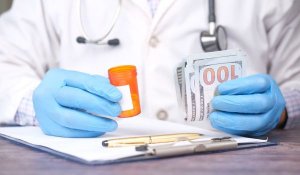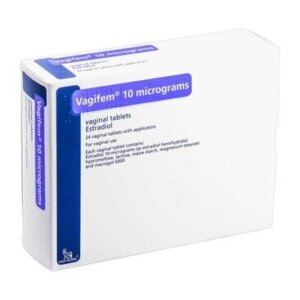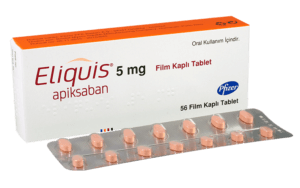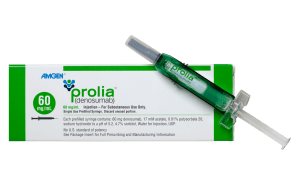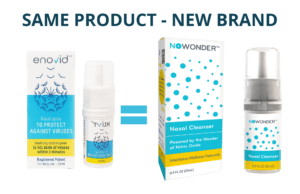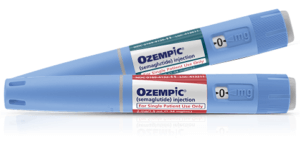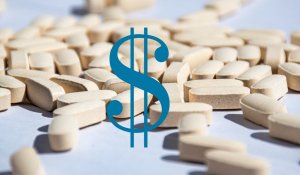
In the following sections, we will outline the main aspects of these three developments.
1. The Influence of Pharmacy Benefit Managers
Pharmacy Benefit Managers (PBMs) have become integral to the administration of prescription drug benefits in the American healthcare system. These companies manage pharmaceutical benefits on behalf of health plans, employers, and government entities. Their initial role was to manage escalating prescription drug costs and the increasing prevalence of third-party insurance coverage for medications. Over the past few decades, the PBM industry has experienced substantial growth and consolidation, resulting in a landscape dominated by a few major players. According to the National Taxpayers Union, in 2023, three PBMs controlled roughly 80 percent of the market, and all three are vertically integrated with a major health insurer (CVS Caremark with Aetna, Express Scripts with Cigna, and OptumRx with UnitedHealthcare). This evolution has brought increased attention to their operations, with growing concerns and controversies arising from rising prescription drug costs and issues related to patient access to necessary medications. The shift in PBMs’ role from primarily processing claims to wielding significant influence over drug pricing and access has made them a focal point in the ongoing efforts to reform the pharmaceutical market.
Click here for a great video called “The hidden forces destroying America’s pharmacies” from Morning Brew.
A summary of how PBMs were supposed to work
The origins of Pharmacy Benefit Managers can be traced back over half a century, with their initial function being primarily the processing of prescription drug claims, ensuring that pharmacies are reimbursed for the medications dispensed to patients. They also play a crucial role in developing and managing the lists of covered drugs within specific therapeutic classes (called formularies) to encourage the use of preferred medications. PBMs implemented generic substitution policies, incentivizing the use of lower-cost generic equivalents whenever available.
A significant aspect of their role involves negotiating rebates with drug manufacturers, often based on the volume or market share of a particular drug. PBMs also established networks of retail pharmacies and negotiated reimbursement rates with these pharmacies for dispensing medications to insured customers. Through these functions, PBMs exert considerable influence on drug access and costs within the healthcare system. Their comprehensive involvement affects which medications are available to patients, the cost-sharing they incur, and the reimbursement pharmacies receive.
Pharmacy Benefit Managers were set up to self-fund by deriving revenue through fees from insurers based on the volume of prescription drug claims they process, or in some cases, from per-member, per-month fees paid by health plans for the PBM’s services.
How do PBMs work today?
Rebates and “spread pricing” now contribute a major part of the earnings, which means PBMs charge health plans a higher amount for a drug than they reimburse the dispensing pharmacy, keeping the difference as profit. PBMs can also generate revenue by steering patients towards their own affiliated pharmacies. The complex nature of these revenue models, particularly surrounding rebates and spread pricing, has led to concerns about potential conflicts of interest and questions regarding whether the cost savings achieved are fully passed on to payers and patients.
What is the impact of PBM control on drug prices
Despite their initial mandate to control costs, it is now widely recognized that PBMs have become a contributing factor to rising prices. The system of negotiating rebates from manufacturers can incentivize PBMs to favor higher-priced drugs that offer larger rebates, even if lower-cost alternatives exist. Consequently, patients may face higher out-of-pocket expenses based on the inflated list prices before rebates are applied. A report from the Federal Trade Commission (FTC) in January 2025 said that “the three major PBMs marked up numerous specialty generic drugs dispensed at their affiliated pharmacies by thousands of percent, and many others by hundreds of percent. Such significant markups allowed the PBMs and their affiliated specialty pharmacies to generate more than $7.3 billion in revenue from dispensing drugs in excess of the drugs’ estimated acquisition costs from 2017-2022.”
The exact mechanisms of rebates and spread pricing that all PBMs engage in are a closed book, making it difficult to fully understand their impact on the pharmaceutical supply chain. The extent to which rebates are retained by PBMs versus being passed on to health plans and ultimately to patients is often unclear. Similarly, the details of spread pricing arrangements, where PBMs profit from the difference between what they pay pharmacies and what they charge payers, are often not transparent. This lack of clarity makes it challenging for payers, policymakers, and patients to assess whether PBMs are truly acting in their best interests and whether the savings they claim to generate are fully realized.
An interim report released by the FTC in July 2024 highlighted concerns about PBMs profiting at the expense of both patients and independent pharmacies, pointing to a potential misalignment of incentives within the industry. The FTC has also taken legal action against major PBMs, alleging anti-competitive practices, particularly in relation to the pricing of insulin.
2. The growth of pharmacy deserts

Furthermore, these areas are often characterized by lower income levels, as well as a higher proportion of residents who lack health insurance or rely on public health insurance.
There’s a great explanation of what is happening in this vital sector of the healthcare industry on this YouTube piece, and we strongly recommend that anyone who is concerned by the spread of pharmacy deserts should watch it to get a better grasp of the causes and possible effects of this.
The primary cause of the increasing number of pharmacy deserts is the closure of community retail pharmacies. As previously discussed, the financial pressures exerted on pharmacies by PBMs, particularly independent pharmacies, through low reimbursement rates and other tactics, contribute significantly to these closures. When independent pharmacies, which are often the only pharmacy providers in rural or underserved areas, are forced to close due to financial unsustainability, it directly leads to the creation or expansion of pharmacy deserts, and the lack of convenient access to pharmacies in pharmacy deserts has significant negative consequences for the health and well-being of residents. Individuals living in these areas often face challenges in obtaining their prescription medications, which can lead to medication non-adherence. This, in turn, can worsen existing chronic health conditions and increase the likelihood of emergency room visits and preventable hospitalizations. Pharmacy deserts disproportionately affect communities of color and low-income neighborhoods, worsening the existing inequities in healthcare access and outcomes.
3. Borrow or do without
Due to the ballooning cost of medications, even insured individuals are sometimes faced with having to choose between paying for their prescribed drugs or paying for fundamentals like putting food on their table. A survey by Gallup on behalf of West Health, a group of non-profit organizations that is working to lower healthcare costs for seniors, found that more than 30 million Americans borrowed about $74 billion in 2024 to pay for their household’s medications. There’s also a sharp distinction on where the burden falls heaviest, with people in the age groups 18-29 and 30-39 being nearly 10 times more likely to have needed to borrow to pay for their medications than people over the age of 65, and about twice as likely than people in the 50-64 age group. That makes the impact even more severe because it’s the younger people who need to save for their retirements, not spend it on consumables.
Importantly, the amounts that people have had to borrow are not small, which suggests that this is not just a problem for people on low incomes.
As the graph shows, nearly 40% of all borrowers needed to borrow between $1,000 and $10,000 in 2024, and more than half needed between $500 and $1,000. By rough calculation, that gives the average borrowings for medications in 2024, for the 31 million households that had to resort to this way of paying, at more than $2100 each.
The other side of this coin is that too often people don’t have the option of borrowing, and so simply have to stop taking their prescribed medications, or cut back at the cost of failing to get the proper dosages.
IsraelPharm offers a way to escape the grip of the PBMs and the shortage of pharmacies

In the table below, we compare the usual prices customers are having to pay in a US retail pharmacy for some of the most popular drugs to our prices:
| Product | Main use | US Retail price | Our price | You save |
| Jardiance
10 mg tablets |
Diabetes | $25.33 | $3.17 | 87% |
| Eliquis
5 mg tablets |
Blood thinner | $13.10 | $2.50 | 79% |
| Wegovy
4×2.4 mg injections |
Diabetes/weight loss | $1590 | $599 | 62% |
| Trintellix
10 mg tablets |
Major Depressive Disorder (MDD)
|
$18.33 | $3.07 | 83% |
| Myrbetriq
50 mg tablets |
Overactive bladder | $11 | $1.74 | 87% |
| Xarelto
20 mg tablets |
Prevents blood clots | $23.50 | $2.80 | 88% |
| Jakafi
20 mg tablets |
Treating myelofibrosis | $306.25 | $60.71 | 80% |
| Prolia
60 mg vial |
Osteoporosis | $2510 | $480 | 81% |
| Xeljanz
11 mg tablets |
Rheumatoid arthritis | $188.68 | $25.55 | 86% |
Above prices are current as of this publication April 2025
You can also rely on fast and efficient supply because all the years of operating as the most reliable online pharmacy has given us hands-on experience with logistics, packaging, and transport. We can commit our trained and dedicated team to dispatch orders within 48 hours and to reach you safely, generally within 7-10 days.
When it comes to our customers in the US, we have extensive knowledge of the rules governing the delivery of pharmaceuticals. We can ensure that your order will reach you by the best possible route and in the same state as when it left our shelves. When it comes to the growing demand for medicines that need to be dispatched under special conditions like refrigeration, we have set up channels that will get the medication into your hands safely and ready for immediate use, without fail.
FAQs
Does IsraelPharm require a special prescription?
No. We accept prescriptions written by licensed physicians from your country. We will need to receive your prescription prior to despatch. It must be less than a year old, and no prescription medication can be dispensed by us unless a valid prescription is provided.
What is the difference between brand and generic drugs?
Developers of newly released drugs have a specific period (usually between five and seven years) during which only they can sell the drug. During this period, it is a ”branded” drug. At the end of that time, the FDA can approve the manufacture and sale of versions that have the same therapeutic benefits and exactly the same qualities as the original, called generic versions. Generic drugs are usually cheaper than the brands because there is less research and development cost than the original, patented version.
Are there any drugs that IsraelPharm doesn’t sell?
We are bound by the laws and regulations as all Israeli pharmacies, and also operate with high ethical standards. We do not supply some controlled substances, such as psychotropic drugs like Xanax, Ritalin, and Valium, or opioids, due to the possibility of mismanagement once the parcel is out of our hands.
Will the Israeli drugs be identical to those from a US pharmacy?
In many cases, the medication we supply comes from different countries. It could have a different name and have a different shape or color. However, the manufacturer has to be either a subsidiary or a licensed associate of the patent holder of any branded drug, or of the holder of the FDA/EU approval of a generic. You can be assured that the way the medicine works is identical to what was prescribed and of the highest quality.

